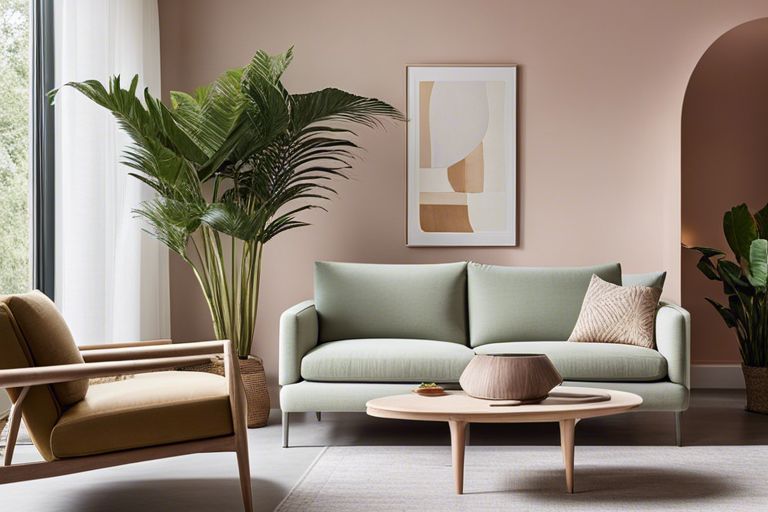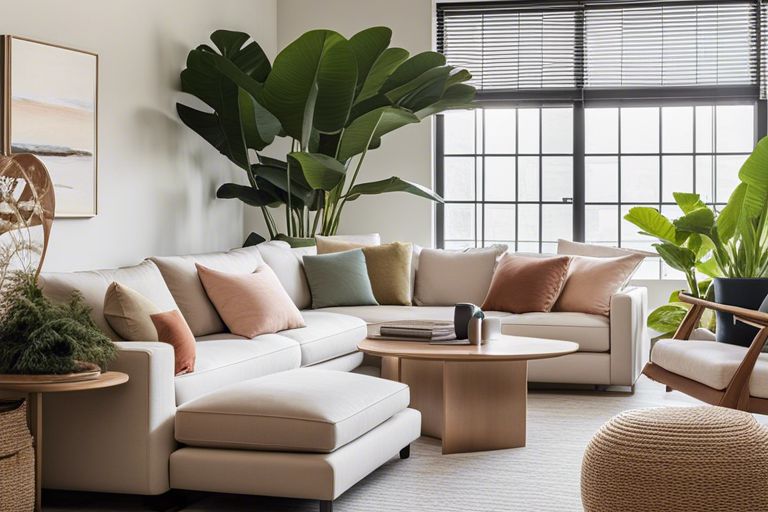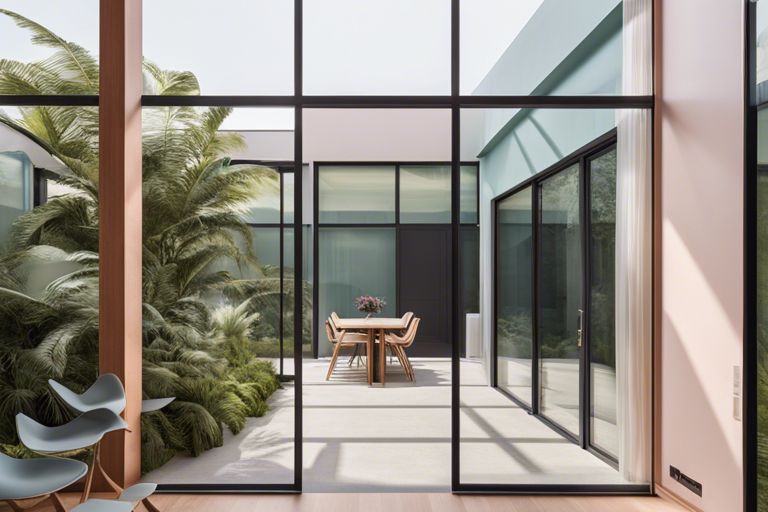There’s a harmonious blend of energy flow and natural elements waiting to transform your space with the ancient art of Feng Shui in Biophilic Design. By infusing your surroundings with positive vibrations and organic materials, you can create a sanctuary that nurtures your well-being and connects you to nature. Discover practical tips and techniques that inspire balance and harmony within your living environment, bringing peace and tranquility into your daily life.
Key Takeaways:
- Feng Shui and Biophilic Design: Incorporating Feng Shui principles into biophilic design can enhance the connection between humans and nature while creating a harmonious environment.
- Nature Elements: Including elements such as natural light, plants, water features, and sustainable materials can promote positive energy flow and well-being in space.
- Balance and Harmony: By carefully considering the layout, color scheme, and placement of objects in a space, one can achieve a sense of balance and harmony that supports overall well-being and productivity.
The Harmony of Biophilic Design
While biophilic design aims to bring nature into indoor spaces, it also focuses on creating a harmonious environment that benefits your well-being. By incorporating natural elements, such as plants, natural materials, and sunlight, you can create a space that promotes tranquility and balance.
Embracing Nature in Architecture
Embracing nature in architecture involves integrating natural elements into the built environment to create a seamless connection with the outdoors. By incorporating elements such as living green walls, water features, and natural materials like wood and stone, you can create a space that mimics the natural world. This design approach not only enhances the aesthetic appeal of a space but also has numerous benefits for your health and well-being.
The Importance of Natural Light and Ventilation
For biophilic design to be truly effective, the incorporation of natural light and ventilation is crucial. Natural light not only helps reduce energy consumption but also has a significant impact on your mood and productivity. Natural ventilation helps improve indoor air quality, creating a healthier and more comfortable living or working environment.
Another crucial aspect of incorporating natural light and ventilation is the connection to the outdoors. Views of nature and access to fresh air not only enhance your overall well-being but also create a sense of openness and spaciousness in indoor spaces.
The Principles of Feng Shui
Balancing Yin and Yang Energies
One of the fundamental principles of Feng Shui is balancing the Yin and Yang energies in your living space. Yin energy is associated with qualities like stillness, darkness, and femininity, while Yang energy embodies brightness, activity, and masculinity. To create harmony in your environment, it’s important to ensure a proper balance of these two energies. Too much Yin energy can lead to stagnation and lack of vitality, while excessive Yang energy may result in restlessness and chaos.
The Five Elements and Their Significance
Yang energy is represented by the Five Elements – Wood, Fire, Earth, Metal, and Water – each with its unique attributes and significance in Feng Shui. Wood symbolizes growth and flexibility, Fire represents passion and transformation, Earth embodies stability and nourishment, Metal signifies precision and clarity, while Water symbolizes flow and abundance. By incorporating these elements strategically in your space, you can create a harmonious and balanced environment that supports your well-being and goals.

Integrating Feng Shui into Biophilic Design
Once again, as you explore into biophilic design, incorporating Feng Shui principles can bring a harmonious balance to your living space. By merging these two ancient practices, you can create an environment that not only connects you with nature but also promotes positive energy flow throughout your home. For more detailed guidance on Feng Shui principles, you can refer to Feng Shui Tips for Nashville Homes.
Selecting Materials and Colors
Pertaining to selecting materials and colors for your biophilic design infused with Feng Shui, choose natural elements such as wood, stone, and plants. These materials not only evoke a sense of nature but also have grounding properties that can enhance the flow of energy in your space. Opt for calming colors like greens, blues, and earth tones to create a serene atmosphere that invites tranquility and balance into your home.
Optimizing Space Layout and Furniture Placement
Pertaining to optimizing space layout and furniture placement in your biophilic design inspired by Feng Shui, consider the flow of chi (energy) throughout your home. Arrange your furniture in a way that promotes easy movement and encourages the circulation of energy. Place key pieces such as your bed or desk in the command position, facing the door but not directly in line with it, to enhance a sense of security and control in the space.
Creating a Sense of Balance
Harmonizing Shapes and Forms
After incorporating Feng Shui principles into your biophilic design, you can create a sense of balance by harmonizing shapes and forms within your space. By mixing different shapes such as squares, circles, and triangles, you can create a visually pleasing environment that promotes harmony and tranquility. Consider incorporating furniture with rounded edges to soften the sharpness of rectangular shapes, or adding plants in various shapes to bring diversity to the space.
The Role of Water Features and Plants
The placement of water features and plants is crucial in creating a sense of balance in your biophilic design. Water features, such as fountains or aquariums, can help to bring a sense of calmness and serenity to the space. Plants not only freshen the air but also add a touch of nature and vitality to the environment, making the space feel more balanced and harmonious.
With the incorporation of water features and plants in your biophilic design, you can create a soothing ambiance that promotes a sense of well-being and balance in your space. Water features can help to promote the flow of energy, while plants can bring a sense of vitality and growth. By carefully selecting and placing these elements, you can create a harmonious environment that supports both your physical and emotional well-being.
Overcoming Design Challenges
Despite your best efforts to create a harmonious space using Feng Shui principles, you may encounter certain design challenges that can disrupt the flow of energy. Learning how to address these challenges will help you achieve a balanced and peaceful environment.
Addressing Clutter and Disorganization
Overcoming clutter and disorganization is crucial in Feng Shui design as it can block the flow of positive energy, or chi, in your space. Start by decluttering your surroundings and organizing your belongings in a way that promotes a sense of calm and order. Clearing out unnecessary items and creating designated storage areas will help you maintain a clean and harmonious environment.
Mitigating the Impact of Negative Energies
The presence of negative energies can disrupt the balance and harmony of your space, affecting your well-being and overall energy. By incorporating elements like crystals, plants, and natural light, you can neutralize negative energies and create a more positive and uplifting atmosphere.
The use of Feng Shui cures such as mirrors, wind chimes, and crucial oils can also help counteract negative energy and promote a sense of peace and tranquility in your space.
Applying Feng Shui in Different Spaces
Many people are now incorporating Feng Shui principles into their interior design to create harmonious and balanced living environments. In residential design, creating a peaceful oasis is necessary for your well-being. By applying Feng Shui in your home, you can enhance the flow of positive energy and promote a sense of peace and tranquility. Designing your living spaces with natural elements like plants, water features, and natural light can help you achieve a more balanced and harmonious atmosphere.
Residential Design: Creating a Peaceful Oasis
Spaces that are clutter-free and organized can improve your mental clarity and promote relaxation. Incorporating natural materials such as wood and stone in your decor can also help create a more grounded and peaceful environment. Consider adding indoor plants to your living areas to purify the air and bring in the revitalizing energy of nature.
Commercial Design: Enhancing Productivity and Success
Residential spaces aren’t the only areas that can benefit from Feng Shui design principles. In commercial settings, such as offices and stores, incorporating Feng Shui can enhance productivity and promote success. By arranging furniture and decor to optimize the flow of energy, you can create a more conducive environment for work and business.
Oasis in the workplace can help reduce stress and improve overall morale among employees. Incorporating natural elements like natural light, plants, and water features can create a more inviting and energizing workspace. By paying attention to the placement of furniture and incorporating Feng Shui principles, you can create a harmonious and productive work environment.
Summing up
As a reminder, incorporating Feng Shui in biophilic design can bring balance and harmony to your space by connecting you with nature and optimizing the flow of energy. By carefully selecting natural elements, such as plants, water features, and natural materials, you can create a tranquil and rejuvenating environment that supports your well-being.
Remember to pay attention to the layout of your space, the placement of furniture, and the use of colors to enhance the positive energy flow. By following the principles of Feng Shui and incorporating biophilic design elements, you can create a space that not only looks beautiful but also feels welcoming and nourishing to your body and soul.
FAQ
Q: What is the connection between Feng Shui and Biophilic Design?
A: Feng Shui is the ancient Chinese practice of harmonizing individuals with their surrounding environment, while Biophilic Design is a concept that seeks to connect individuals with nature within the built environment. By incorporating Feng Shui principles into Biophilic Design, we can create spaces that not only enhance our well-being but also promote harmony and balance.
Q: How can Feng Shui principles be integrated into Biophilic Design?
A: There are several ways to incorporate Feng Shui into Biophilic Design. This includes using natural materials like wood and stone, maximizing natural light and ventilation, incorporating living plants, and creating a sense of flow and balance in the space. By paying attention to the layout, colors, and energy flow of a space, we can create environments that support our physical and emotional well-being.
Q: What are the benefits of incorporating Feng Shui in Biophilic Design?
A: By combining Feng Shui and Biophilic Design principles, we can create spaces that not only look visually appealing but also feel harmonious and nurturing. These spaces can have a positive impact on our health, productivity, and overall sense of well-being. By finding balance between nature and the built environment, we can create spaces that nourish both our body and soul.

